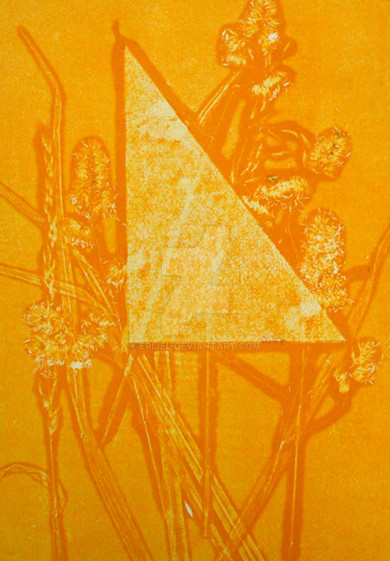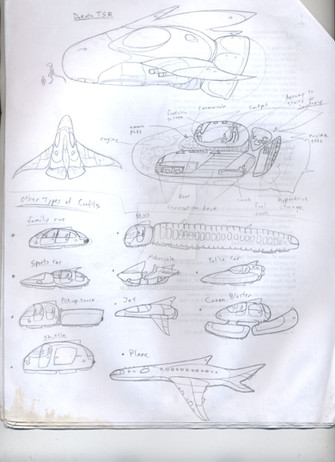HOME | DD
 Neframe — Civilian Torchships
Neframe — Civilian Torchships

Published: 2020-09-09 20:17:41 +0000 UTC; Views: 4761; Favourites: 120; Downloads: 12
Redirect to original
Description
Forming the backbones of most space-age system-scale economies, the prevalence of civilian-grade torchdrives has enabled widespread and efficient extraction and exploitation even of bodies with to weak gravitational fields to be accessed through FTL. Able to sustain high thrust for extended periods of time and operate at high energy yields, torchships have enabled travel to and from objects several light-minutes, sometimes upwards of a light-hour, away from their closest significant mass, allowing civilian space-age agencies to establish orbital mineral extraction, refining, and manufacturing chains, as well as extensive orbital solar power arrays and deep-space research platforms. Although few polities allow torch-equipped civilian vessels within their atmosphere due to the inherent radiation hazard and destructive potential, their ability to safely and cost-effectively transport either huge volumes of goods in slow burns or sophonts in rapid brachistochrone trajectories have made them an integral part of the freight and passenger branches in most planetary systems and belts across the known galaxy.
Below is some of the most common drive designs with their standard modules. Although modules and payload can vary greatly, very few star nations allow any meaningful modifications to the torch drives themselves; any torch vessels exceeding legal specifications are likely to be impounded by local law enforcement, and any ship without a functional ident module is likely to be treated as debris.
1: Areshkil-15 pattern drive carrier.
Named "Starstreamer" in Delkshian Raptoridian, the Areshkil was originally pioneered by the Enshuzuen Technologies corporation to provide a reliable and cheap platform lacking practical military value for the 5th expansion initiative along the Raptoridean-Venomairie border in the 1850ies. With two large spherical containers for fusion-fuel and two smaller tanks for RCS metallic hydrogen, a fusion drive mounted in one end, and four cargo blocks and a command module at the other, the Areshkil's simplicity have made it popular in Union space and beyond; today most aerospace manufacturers in Raptoridean space and the nearby Venomairie Liktaiy and Koleha provinces field variants of the model.
Lenght: 135 metres
Wet mass: 31 300 metric tons.
Payload capacity: 160 000 metric tons.
Remass fraction: 3/5.
Engine yield: 12 terawatt.
Radiator: 4 TMS45x molybedenium-lithiumsalt heat pumps; dual-layer reinforced.
2: Model 4 Traveler drive carrier.
Manufactured by the Pamyatan Interstellar Transport Corporation (КТМ), the Model 4 Traveler has met great success across the more developed parts of the interstellar market; largely thanks to a two-part structure with removable engine block that allows it to detach the torch drive in orbit, and descend and maneuver in atmosphere on ATC and countergrav to make direct deliveries and accurately land bulk cargo. The extended countergrav systems and sensor arrays, as well as a mid-ships high-altitude jump drive, draws their power from two 30 gigawatt fusion plants; although the drive, cargo section, remass tanks, and superstructure mass only 24 500 tons, the counter-grav and metallic hydrogen ATCs are able to safely set down up to 3 500 000 tons of cargo on most habitable worlds.
Length: 122 metres
Wet mass: 24 500 metric tons.
Payload capacity: 3 500 000 metric tons.
Jump Capability: up to 8 lightyears every 300 seconds. Can carry fuel and parts for 40 light years.
Remass fraction: 3/4.
Engine yield: 18 terawatt.
Radiator: 2 TDD214t molybedenium-lithiumsalt heat pumps.
3: Type 58 Civilian Grade.
Released by the Unified Defense Committee as a version of the Type 58 torches propelling their cruisers conforming to civilian regulation standards. One of the most efficient torchdrive carriers on the civilian market, the Type 58 is also highly reliable and expensive; requiring significant subsidizing by Se´kayn and Navician governments to enter widespread civilian use at all. Although a very capable deep-space vessel, it remains highly criticized as more of an expansion of the UDC military-industrial complex than anything, with many Se´kayn polities wary of corporate power boycotting the series outright.
Like most swing-role military ships, it is oriented horizontally rather than vertically, with a fully bilaterally symmetric layout.
Length: 89 metres.
Wet mass: 22 010 metric tons.
Payload capacity: 250 000 metric tons.
Remass fraction: 2/3.
Engine yield: 6.2 terawatt.
Radiator: MCLR molybedenium-lithiumsalt heat pump, dual panel.
4: Kaishtol Series-Ky civilian fusion torch.
Originally co-developed between Kiratku Synergetics and the Tzaan Dependency state corporation Corstell for use by law enforcement and paramilitary organisations in the Niyxarith province of Sepentin and the Tzaan Self-defense Force, the Series-Ky quickly gained a civilian version with modified drive specifications and retooled security hardwirings; however, both the semi-military and civilian model retains the supreme-performance FTL drive and the secondary fusion-jet atmospheric engines, making the Kaishtol Series-Ky a highly versatile and agile, if costly, multi-role spacecraft. For this reason, it has quickly gained renown among freelance couriers and special-value transport runners. Although the cargo capacity is severely limited, being 3 sets of specialized pods, the loadout is highly modular and can easily be refitted between a great variety of uses at any spaceport facility within the hour.
The sophisticated smart material-algorithm functionality inherent to all Kiratku Synergetics products makes them notoriously difficult to reverse-engineer, and with the Sepentin military enforcing the intellectual property rights to all technologies developed for them, it likely will remain without competition but expensive and difficult to maintain for at least another two generations of aerospacecraft.
Length: 94 metres.
Wet mass: 23 000 metric tons.
Payload capacity: 4 500 metric tons.
Jump Capability: up to 12 lightyears every 230 seconds. Can carry fuel and parts for 300 light years.
Remass fraction: 4/5.
Engine yield: 7 terawatt.
Radiator: 4 SFSX Synthdiamond ferrofluid core.
5: I-34 Electrosphere.
Developed by the Kantuo State Cosmonautics corporation and licensed to most Cenôxian civilian manufacturers, the Electrosphere is an exclusively space-bound design, with hardwired safeguards to prevent approach within 7500 kilometers of any habitable body or major station, and with a series of dead-hand-trigger nuclear devices to enact an automatic self destruct should the vehicle leave approved flight trajectories or pose a threat to inhabited worlds or major constructs - all this due to it's energy potential being on-par with major warships, and thus posing the inherent potential of mass destruction. Although the internal cargo holds and passenger blocks are limited, the dorsal and ventral surfaces have attachment sites for external blocks, allowing a high potential total mass capacity in cruise mode.
Length: 115 metres.
Wet mass: 35 560 metric tons.
Payload capacity: 600 000 metric tons.
Remass fraction: 3/7.
Engine yield: 52 terawatt.
Radiator: 6 TR-FBA-T molybedenium-lithiumsalt heat pump panels.
6: Kaishmikaln-C Civilian Frame pattern drive carrier.
Built from the same chassis as the Kaissmikaln-pattern D-COR frigates built by Vieraki Ballistics, this civilian variant has been in service across the galaxy for near on two centuries as passenger runners and couriers. Although consistently updated and easily modified, the plethora models and vessels built from the pattern are not particularly well-liked by authorities in civilized space due to their lower-altitude jump-drives and undeniable frame; although lacking the main guns, exterior ablative plating, and auxiliary radiators of a proper frontline warship, the Kaishmikaln-C still retains the chassis, power plant, and agile thrusters of a purpose-built combat vessel, and as such have a significant after-market value as make-shift patrol or piracy vessels - making illegal retrofits of these civilian vessels into gunships one of the principal adversaries and sources of trouble for their modernized, fully-military Kaishmikaln-9 counterparts ubiquitous among the D-COR naval forces.
Length: 120 metres.
Wet mass: 9 400 metric tons.
Payload capacity: 4 750 metric tons.
Jump Capability: up to 9 lightyears every 340 seconds. Can carry fuel and parts for 180 light years.
Remass fraction: 3/5
Engine yield: 26 terawatt.
Radiator: 2 Series-67U liquid-droplet molybedenium-lithiumsalt.
7: Saicoul-line freight driver.
Built in innumerable variants across a thousand worlds since the Sobrai were uplifted and greeted into the galactic community, the Saicoul was originally designed by Deno Flight Systems, and remains one of their flagship pieces of hardware. Constant engine retools, software upgrades, and aesthetic draw has kept it relevant through the two millennia since it's introduction. All proprietary rights long-since expired, the model is carried by just about every driveyard and space vehicle manufacturer in the known galaxy.
Length: 140 metres.
Wet mass: 25 000 metric tons.
Payload capacity: 30 000 metric tons.
Remass fraction: 3/4.
Engine yield: 8 terawatt.
Radiator: 8 TY-Mk4 molybedenium-lithiumsalt heat pump panels, 2 molybedenium-lithiumsalt life-support sinks.
The following are racing vehicles that I drew for fun:
8: Molniya - Interstellar Transport Corporation (КТМ)
9: Nîngshtar - Enshuzuen Technologies
10: Ksethain - Kiratku Synergetics
11: Seknatoi - Vieraki Ballistics
12: Razor - Deno Flight Systems
Related content
Comments: 27

👍: 0 ⏩: 1

👍: 0 ⏩: 0

👍: 0 ⏩: 1

👍: 1 ⏩: 1

👍: 1 ⏩: 1

👍: 0 ⏩: 1

👍: 0 ⏩: 0

👍: 0 ⏩: 1

👍: 0 ⏩: 1

👍: 0 ⏩: 0

I adore the detail you’ve poured into these designs! Realistic spacecraft are fairly uncommon and while I like the fantastical designs that most folks come up with, there’s just something about a good old-fashioned radial torchship that has such an allure to it, you know?
👍: 0 ⏩: 1

👍: 0 ⏩: 0

👍: 0 ⏩: 1

👍: 0 ⏩: 1

👍: 1 ⏩: 0

👍: 0 ⏩: 1

👍: 0 ⏩: 1

👍: 0 ⏩: 1

👍: 0 ⏩: 1

👍: 0 ⏩: 0


























